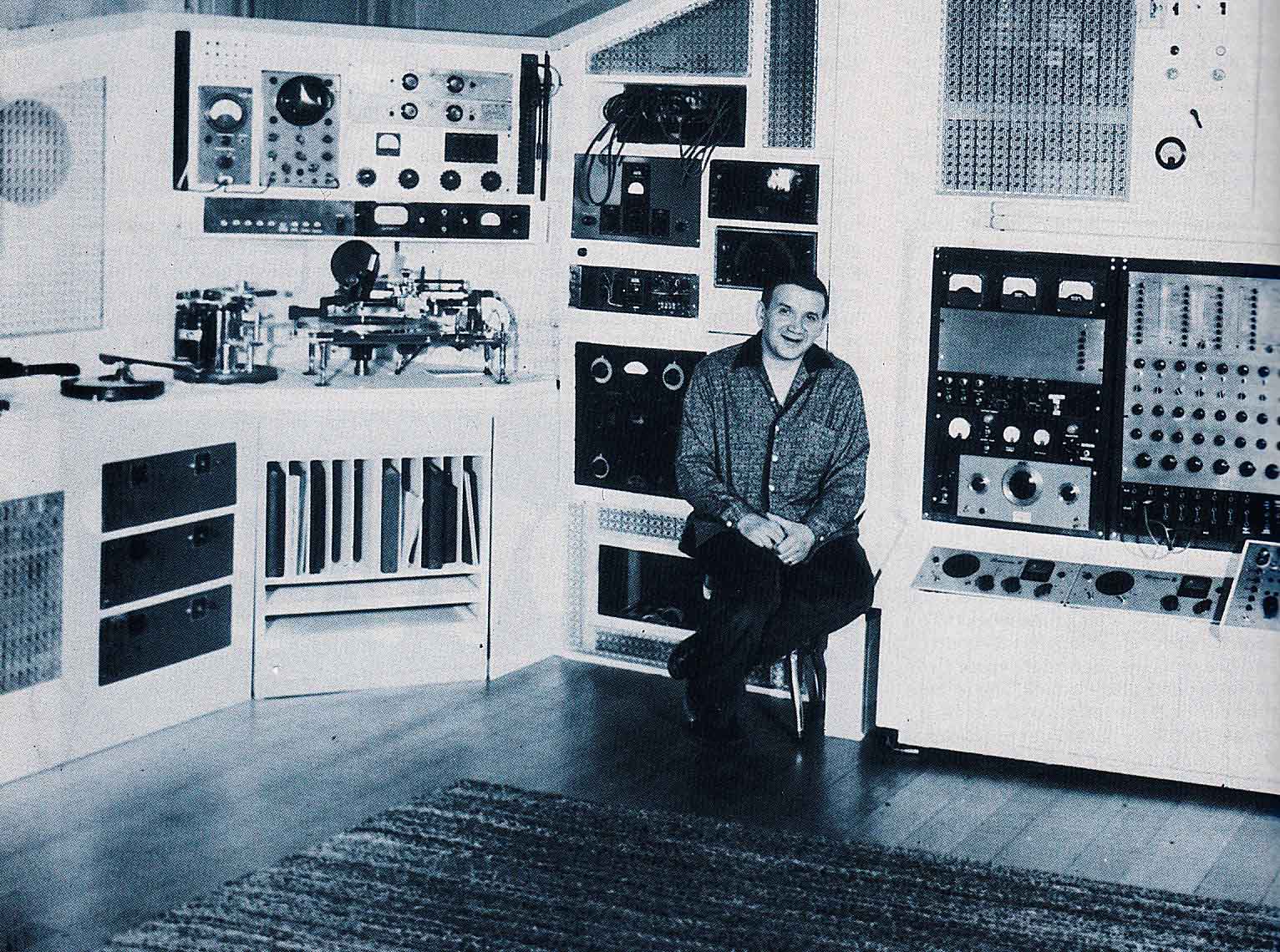Brief biographical sketch:
- September 10, 1908: Harry Warnow is born in Brooklyn, NY.
- 1931: Warnow graduates from the Institute of Musical Art (later known as the Julliard
School).
- 1934: Warnow joins the CBS Radio Orchestra as a pianist, which was conducted by his brother
Mark. To avoid accusations of favoritism in hiring, Harry Warnow adopted the name Raymond Scott, which he selected
at random from the Manhattan phone book. He composes his first hit record for the orchestra, Christmas Night in Harlem.
- 1936: The Raymond Scott Quintette is formed with Lou Shoobe on bass, Dave Harris on tenor
saxophone, Pete Pumiglio on clarinet, Johnny Williams on drums, and Bunny Berigan on trumpet. The Quintette performs
on the Saturday Night Swing Club program on CBS.
- 1937: The Raymond Scott Quintette signs with Master Records, the record label run by
Duke Ellington's manager, Irving Mills, and records many of Scott's well known early compositions such as "Twilight
in Turkey", "Powerhouse", and "The Toy Trumpet".
- 1939: The original Raymond Scott Quintette is disbanded in the summer after recording
releases for Columbia Records, and the full-sized Raymond Scott Orchestra is formed, signing to Columbia in November.
- 1942: Scott forms the first racially integrated orchestra for network radio. He also
meets his future wife, Dorothy Collins.
- 1943: Carl Stalling, music director for the Warner Bros. animation department, makes
his first quotations of Raymond Scott compositions after Scott sold the publishing rights to Warners. Thus began
Raymond Scott's reputation as a "cartoon composer".
- 1946: Scott establishes his electronic music production company, Manhattan Research,
Inc., which files its first patent disclosures that year.
- 1949: Mark Warnow dies of heart failure; Raymond Scott takes over as director of the
Lucky Strike Hit Parade Orchestra.
- 1950: Your Hit Parade moves from CBS Radio to NBC Television.
Scott files patent for a radio receiver that automatically scans frequencies. He divorces his first wife, Pearl.
- 1951: The Jingle Workshop, Scott's music company for commercials, is established.
- 1952: Scott marries Dorothy Collins, and creates the Clavivox keyboard as a keyed adaptation
of a theremin for their daughter Carolyn. Scott also built two early incarnations of multitrack audio recorders
that year.
- 1955: Scott meets a young Bob Moog for the first time, who he contracted with to build
theremin-based tone generation components for the Clavivox.
- 1956: A patent is granted for the Clavivox.
- 1957: Your Hit Parade is cancelled.
- 1959: Scott develops the first version of his combined synthesis and automated music
composition device, the Electronium.
- 1960: Scott invents two more electronic music devices, the rhythm synthesizer and the
pitch sequencer.
- 1963: Soothing Sounds for Baby, Scott's three LP series intended
for infants but later cited as a precursor to what would become ambient music, is released on Epic Records. Scott
also develops a drum machine that he calls "Bandito the Bongo Artist".
- 1970: Scott meets Berry Gordy of Motown Records, who orders an Electronium.
- 1987: Scott suffers a stroke that leaves him unable to work or speak.
- February 8, 1994: Raymond Scott dies at the age of 85.
"Being introduced to the music of Raymond Scott was like being given the name of a composer I feel I have heard my whole life, who until now was nameless. Clearly he is a major American composer."—David
Harrington, Kronos Quartet
Click here for more information and releases by this innovative
musician and engineer.
This page was constructed by Dave Duncan for demonstration purposes only. Content of this page comes from raymondscott.net, Wikipedia, and allmusic.com.

